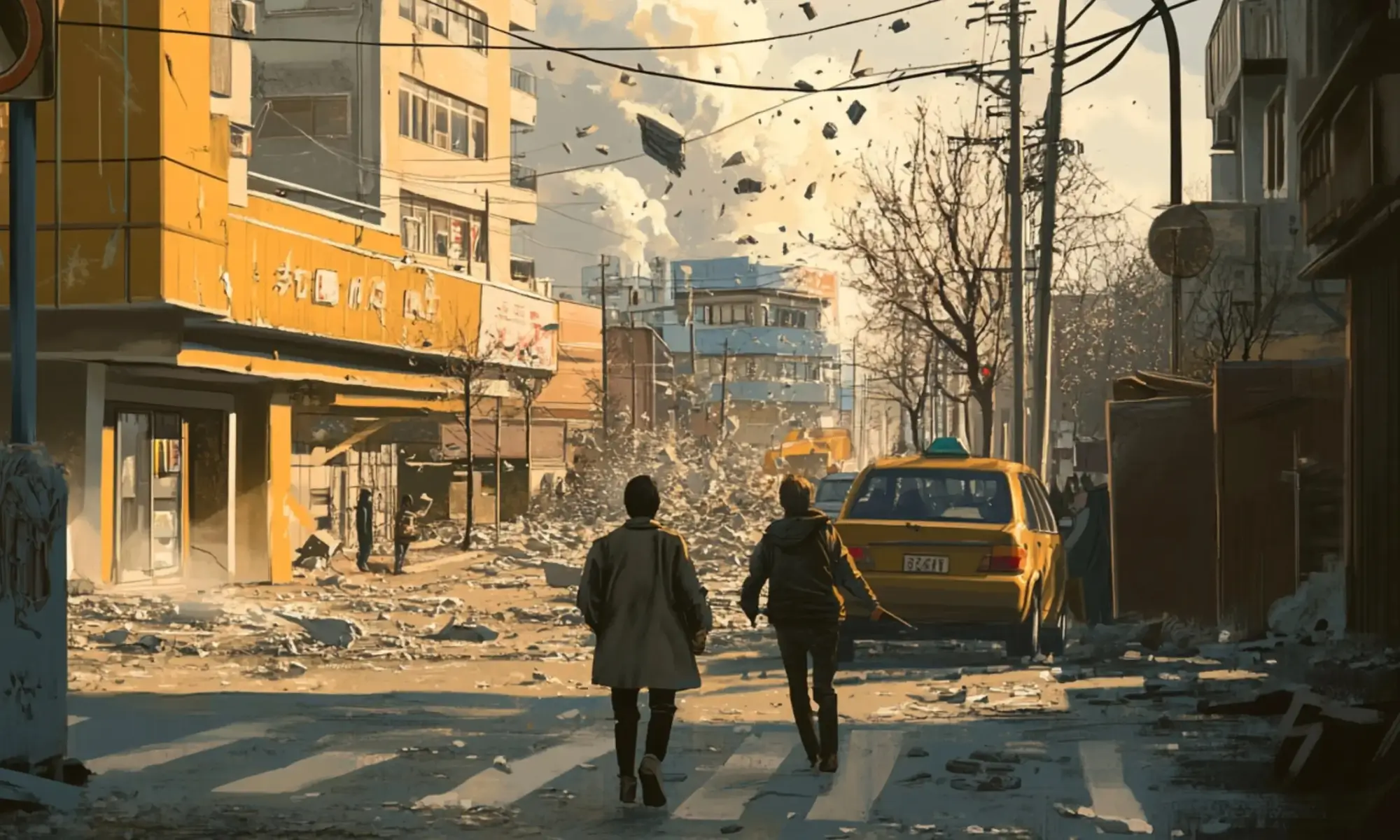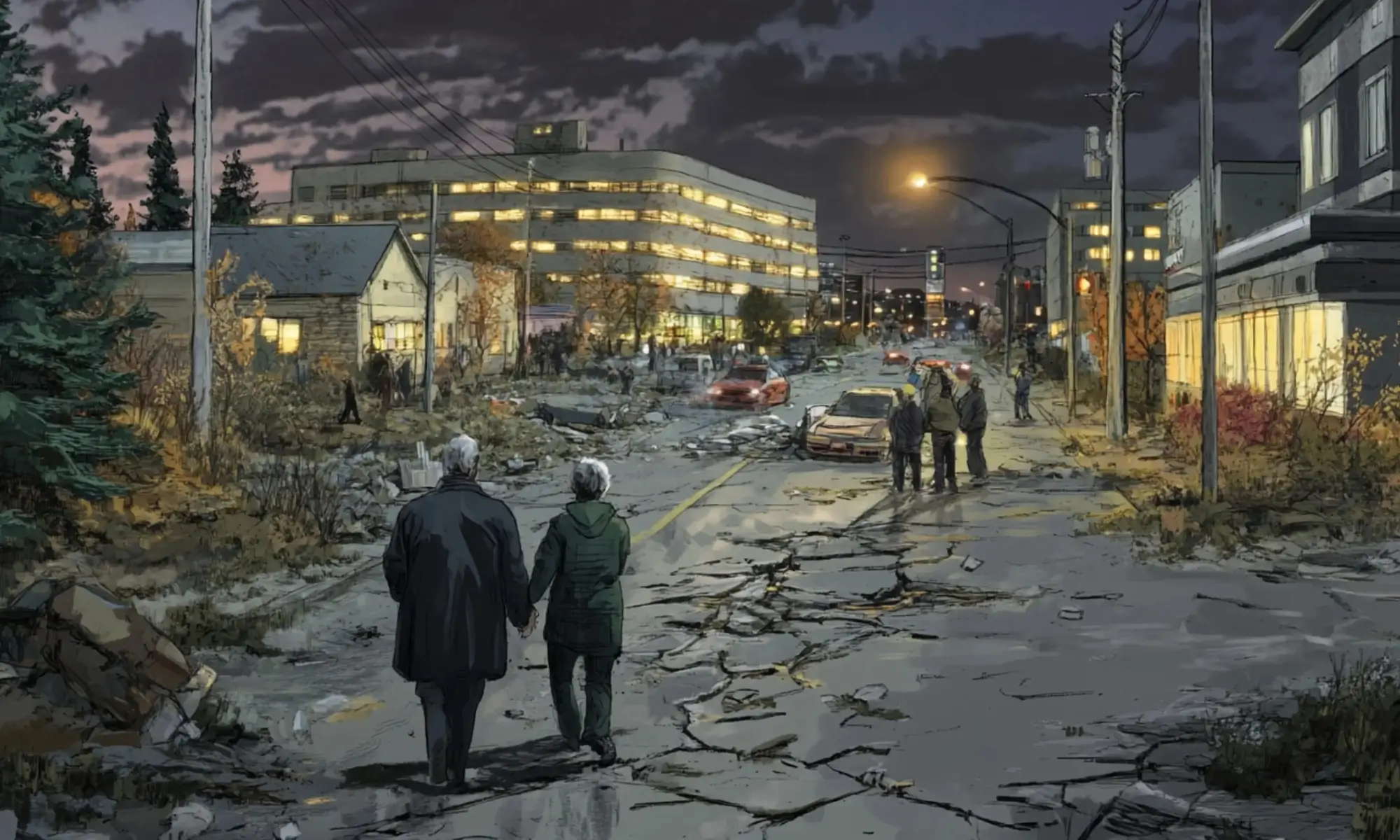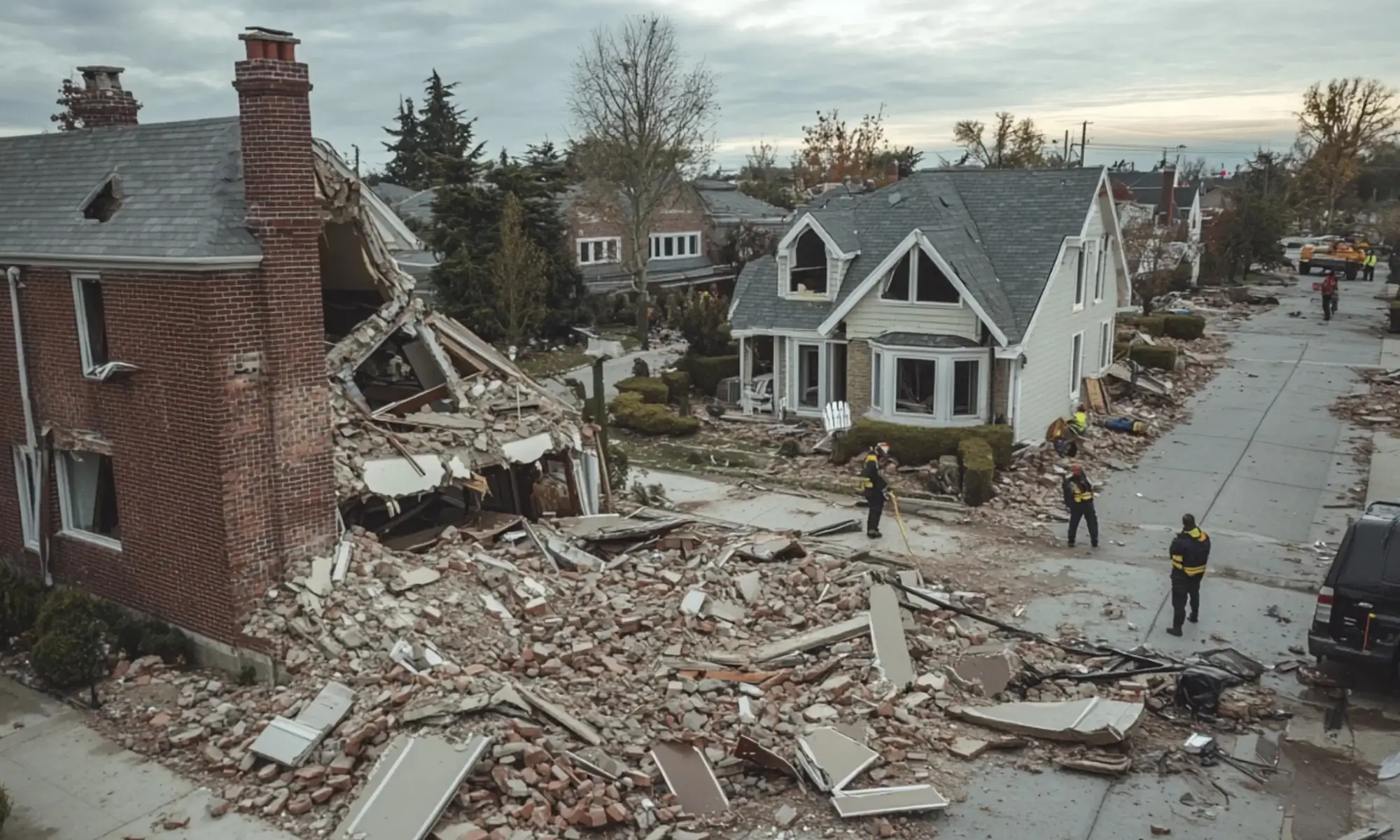Earthquakes are unpredictable natural disasters that can cause devastating damage in seconds. While they occur most often near tectonic plate boundaries, earthquakes can strike anywhere, at any time, and without warning. Proper preparation and knowing what to do during and after an earthquake can significantly increase your chances of staying safe. This comprehensive guide provides actionable tips to help you prepare, respond, and recover effectively.

Understanding Earthquakes
An earthquake is the sudden shaking of the Earth caused by the breaking and shifting of subterranean rock along faults. The severity of an earthquake is measured using the Richter Magnitude Scale, where each increase in magnitude represents a 32-fold increase in energy released. Aftershocks, or smaller earthquakes, often follow the main event and can cause additional damage.
What Causes Earthquakes?
Tectonic Plate Movement:
- The Earth’s crust is divided into several tectonic plates that constantly move. When these plates grind, collide, or pull apart, stress builds up.
- Once the stress exceeds the strength of the rocks, it is released as seismic energy, causing an earthquake.
Focus and Epicenter:
- Focus: The point underground where the earthquake originates.
- Epicenter: The location on the Earth’s surface directly above the focus.
Other Causes:
- Volcanic eruptions, mining activities, and underground explosions can also trigger earthquakes, although these are less common than tectonic-related quakes.

Preparing for an Earthquake
Preparation can mean the difference between life and death when it comes to earthquakes. Taking proactive measures helps protect your family, your property, and your peace of mind. Here’s a detailed explanation of the key steps you need to take to minimize risks:
1. Assess Your Risk
Understanding your local earthquake risks is the first step in preparation:
- Research Earthquake-Prone Areas: Check if your home is in a high-risk zone, especially near fault lines or tectonic plate boundaries. Regions like California, Japan, and Turkey are well-known for their seismic activity.
- Tsunami Awareness for Coastal Areas: If you live near the coast, learn about tsunami risks associated with underwater earthquakes. Familiarize yourself with evacuation routes and identify the highest nearby ground where you can safely retreat.
- Consult Local Authorities: Many government websites and local planning agencies provide risk maps and guidance on seismic safety.
2. Secure Your Home
Protecting your living space can significantly reduce damage and injuries during an earthquake:
- Anchor Heavy Furniture: Use wall studs to secure items like bookcases, cabinets, and large appliances. This prevents them from toppling over during strong shaking.
- Install Cabinet Latches: Add safety latches to cupboards to prevent their contents from spilling out. This is especially critical in kitchens where sharp objects and breakables are stored.
- Upgrade Gas and Water Lines: Use flexible pipe fittings instead of rigid ones to reduce the risk of leaks or bursts during ground movement.
- Reorganize Shelves: Place heavy and fragile items on lower shelves to reduce the risk of falling. Store breakables in secure cabinets.
- Brace Overhead Fixtures: Secure ceiling fans, light fixtures, and hanging decorations to prevent them from falling.
- Secure Water Heaters: Strap your water heater to wall studs and bolt it to the floor to minimize movement.
- Structural Safety: Check your home’s foundation and ensure it is bolted to the structure. Consider hiring a structural engineer to evaluate and retrofit your home if necessary.
3. Develop an Emergency Plan
Having a clear and practiced emergency plan ensures everyone in your family knows what to do during and after an earthquake:
- Identify Safe Spots: In each room, locate areas where you can drop, cover, and hold on—under sturdy furniture or against interior walls away from windows.
- Create a Communication Plan: Decide on meeting points in case family members are separated. Designate an emergency contact outside your immediate area to relay information.
- Learn Local Protocols: If your children attend school or daycare, familiarize yourself with their earthquake safety procedures.
- Practice Regularly: Run earthquake drills with your family to make the response instinctive. Discuss scenarios like nighttime earthquakes or situations where family members are away from home.
4. Assemble an Emergency Kit
An emergency kit should sustain you and your family for at least three days. Keep one in your home, car, and workplace for maximum preparedness:
Essential Supplies:
- Food and Water: Non-perishable items and at least one gallon of water per person per day.
- Flashlight and Batteries: In case of power outages, these are indispensable.
- First Aid Kit: Include bandages, antiseptics, pain relievers, and any necessary prescription medications.
- Important Documents: Keep copies of ID, insurance policies, and emergency contacts in a waterproof container.
- Cash: Have small denominations on hand since ATMs may be out of service.
- Whistle and Shoes: A whistle can help rescuers locate you, and sturdy shoes protect against debris.
- Blankets and Clothing: Pack weather-appropriate items to stay warm and comfortable.
By systematically following these steps, you can significantly improve your chances of staying safe and reducing the impact of an earthquake on your life. Regularly review and update your plans and supplies to stay prepared for any eventuality.

What to Do During an Earthquake
Earthquakes strike without warning, leaving little time to react. Knowing the right steps to take during the shaking can save lives and prevent injuries. Here’s a detailed guide on what to do in various scenarios:
Remember the Key Technique: Drop, Cover, and Hold On
This proven safety method helps minimize injuries during an earthquake:
- Drop: Get down onto your hands and knees immediately. This position prevents you from being knocked over and allows you to move if needed.
- Cover: Use your arms to shield your head and neck, or take cover under sturdy furniture, such as a table or desk. If no shelter is nearby, move to an interior wall and cover your head and neck.
- Hold On: Grasp the furniture or brace yourself to stay protected as the shaking moves it around.
If You’re Indoors
Staying inside is often safer than trying to run outside during an earthquake. Follow these steps to reduce your risk:
- Take Shelter: Drop, cover, and hold on under sturdy furniture like a table or desk. If unavailable, move to an interior wall, away from windows, mirrors, or heavy objects.
- Stay Put: Avoid running to other rooms or outside, as falling debris and glass near doors can pose a severe hazard.
- Avoid Dangerous Areas:
- Stay away from windows, skylights, and large furniture that could topple over.
- Do not use elevators, as power outages or structural damage may trap you inside.
- If in Bed: Stay in bed and protect your head with a pillow. Broken glass on the floor can cause injuries if you try to get up during the shaking.
If You’re Outdoors
When outside during an earthquake, the open area is generally the safest place:
- Move to Open Space: Quickly get away from buildings, trees, streetlights, utility wires, and overpasses.
- Stay Low: Drop to the ground and remain there until the shaking stops. Avoid moving around during the quake.
If You’re in a Vehicle
Earthquakes can cause sudden hazards on the road, such as falling debris and cracks in the pavement. Follow these steps:
- Pull Over Safely: Stop your vehicle as soon as it’s safe to do so, away from bridges, overpasses, power lines, and large structures.
- Stay Inside: Keep your seatbelt fastened and remain in the vehicle until the shaking stops.
- Turn on the Radio: Listen for emergency information or updates.
- Proceed with Caution: After the quake, drive carefully while watching for road damage, fallen debris, or other hazards.
If You’re Near the Coast
Earthquakes near coastal areas can generate tsunamis. Protect yourself by following these steps:
- Evacuate Immediately: If the shaking lasts more than 20 seconds, move to higher ground or inland at least two miles from the coast.
- Don’t Wait for an Official Warning: Tsunamis can arrive quickly, and warning systems may not always detect them in time.
- Avoid Driving: Walking to higher ground is often faster and safer than driving, especially on congested roads.
Additional Tips
- Expect Aftershocks: After the initial earthquake, be prepared for aftershocks, which can be as dangerous as the main quake.
- Stay Calm: Panicking can lead to poor decisions. Focus on protecting yourself and those around you.
- Help Others: If you see someone in need, offer assistance if it’s safe to do so.
By staying informed and practicing these techniques, you can reduce the risk of injury and increase your chances of staying safe during an earthquake.

What to Do After an Earthquake
The aftermath of an earthquake can be chaotic and dangerous, but taking the right steps can help ensure your safety and aid recovery efforts. Here’s a detailed guide on what to do once the shaking stops:
1. Check for Safety
Your immediate priority after an earthquake is to assess your surroundings for potential hazards:
Identify Immediate Dangers:
- Look for fires, which are common after earthquakes due to ruptured gas lines.
- Check for gas leaks by smelling for gas or listening for hissing sounds. If you suspect a leak, shut off the gas supply and evacuate the area.
- Inspect for structural damage like cracked walls, broken chimneys, or leaning buildings.
Stay Out of Damaged Buildings:
- Do not enter buildings that appear damaged until they are inspected and deemed safe by professionals.
- Be cautious of falling debris or glass when moving around.
Beware of Electrical Hazards:
- Avoid fallen power lines and assume all wires are live.
- Turn off the electricity if you suspect damage to your home’s electrical system.
2. Attend to Injuries
Providing immediate care to yourself and others can prevent minor injuries from becoming life-threatening:
Administer First Aid:
- Treat cuts, scrapes, and other injuries promptly.
- Stop bleeding by applying pressure with a clean cloth.
- Stabilize fractures and keep injured persons comfortable.
Seek Medical Help:
- If injuries are severe, call emergency services or go to the nearest hospital if it’s safe to travel.
Avoid Further Harm:
- Protect yourself from falling debris while assisting others.
- Use gloves or other protective equipment when handling sharp or hazardous materials.
3. Stay Connected
Communication can be challenging immediately following an earthquake, but staying informed is crucial:
Use Battery-Powered Devices:
- Tune in to a battery-powered or hand-crank radio for emergency updates and official instructions.
- Check local apps or emergency alerts on your smartphone if internet service is available.
Preserve Phone Battery Life:
- Communicate using text messaging instead of calls, as texts use less bandwidth and are more likely to go through during network congestion.
- Keep power banks or backup batteries handy to recharge devices if needed.
4. Expect Aftershocks
Aftershocks can occur minutes, hours, or even days after the main earthquake:
Be Prepared:
- Take cover immediately if aftershocks occur.
- Avoid returning to damaged structures until aftershocks subside and the area is declared safe.
Reassess Safety:
- Check your surroundings for new hazards created by aftershocks, such as shifted debris or weakened structures.
5. Document Damage
Proper documentation is essential for insurance claims and recovery efforts:
Take Photos and Videos:
- Capture clear images of any damage to your home, belongings, and property.
- Ensure photos include timestamps, if possible, to validate when the damage occurred.
Contact Your Insurance Provider:
- Notify your insurance company as soon as possible to start the claims process.
- Provide the necessary documentation and receipts for damaged items.
Keep Records:
- Save all receipts for emergency repairs and temporary lodging, as they may be reimbursable.
Additional Tips for Recovery
- Seek Shelter: If your home is uninhabitable, visit a designated shelter or stay with family or friends.
- Monitor Health: Watch for symptoms of stress or trauma in yourself and others, and seek support if needed.
- Help Neighbors: Check on vulnerable individuals, such as the elderly, disabled, or those living alone.
- Plan for Future Quakes: Use this experience to improve your preparedness for the next potential earthquake.
By staying calm, assessing risks, and following these steps, you can protect yourself and your loved ones while aiding recovery after an earthquake.

Comforting Children After an Earthquake
Earthquakes can be traumatic for children, leaving them feeling scared, anxious, or confused. As a caregiver, providing emotional support and reassurance is crucial for helping them process their feelings and regain a sense of safety. Here’s how to comfort and support children after an earthquake:
1. Start the Conversation
Open communication is the first step to addressing their fears:
- Encourage Expression: Invite your child to share how they feel. Ask open-ended questions like, “How did the earthquake make you feel?” or “What was the scariest part for you?”
- Listen Actively: Pay close attention to their words and body language. Validate their emotions by saying things like, “It’s okay to feel scared,” or “I understand why you might feel that way.”
- Be Honest: Explain what happened in age-appropriate terms. For example, you might say, “An earthquake is when the ground shakes because of movements deep inside the Earth. It can be scary, but we’re safe now.”
2. Provide Reassurance
Help children feel secure and supported:
- Focus on Safety: Emphasize that the earthquake has passed and explain the steps you’re taking to keep them safe, such as staying in a safe place or having emergency supplies ready.
- Offer Physical Comfort: Hold them, hug them, or let them sit close to you to provide a sense of physical safety.
- Reassure Them It’s Not Their Fault: Younger children might blame themselves for the disaster. Let them know earthquakes are natural events and no one is to blame.
3. Maintain Routines
Consistency helps children regain a sense of normalcy:
- Stick to Familiar Patterns: Keep bedtime, meals, and other daily routines as normal as possible.
- Create a Calm Environment: If possible, return to a familiar and comfortable setting where they can feel more at ease.
- Involve Them in Activities: Simple tasks like drawing, reading, or playing games can help distract them and reduce stress.
4. Address Signs of Emotional Distress
Watch for symptoms of trauma and address them promptly:
- Common Reactions:
- Clinginess or separation anxiety
- Trouble sleeping, including nightmares
- Mood swings or irritability
- Physical symptoms like stomachaches or headaches
- When to Seek Help: If your child’s anxiety or fear persists for weeks or worsens, consider consulting a pediatrician or mental health professional.
5. Teach Coping Strategies
Equip children with tools to manage their emotions:
- Practice Calming Exercises: Teach them deep-breathing techniques. For instance, guide them to take slow breaths in through the nose and out through the mouth.
- Create a “Safe Space”: Help them designate a cozy spot at home where they can go when they feel overwhelmed.
- Reassure Them with Facts: Explain that aftershocks or future earthquakes are rare and that the family has a plan to stay safe.
6. Involve Them in Preparation
Empowering children with knowledge and responsibilities can ease their fears:
- Explain Safety Plans: Show them the family’s emergency kit and practice “Drop, Cover, and Hold On” drills together.
- Assign Small Tasks: Let them pack a comfort item, such as a favorite toy or blanket, in the emergency kit.
Additional Tips
- Limit Exposure to News: Shield children from graphic images or alarming news coverage about the earthquake.
- Encourage Positivity: Share stories of recovery or acts of kindness during the event to help them focus on hope and resilience.
- Spend Quality Time Together: Engage in activities that your child enjoys to reinforce a sense of security and happiness.
By addressing their fears, maintaining routines, and equipping them with coping strategies, you can help children navigate the emotional challenges of an earthquake. The key is to make them feel heard, loved, and safe.
Conclusion
Earthquakes are inevitable, but their impact doesn’t have to be catastrophic. By preparing in advance, knowing what to do during the shaking, and taking the right steps afterward, you can protect yourself, your loved ones, and your community. Stay informed, stay prepared, and stay safe.

